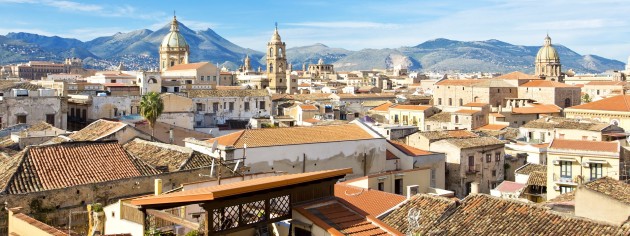FOCUS ON PALERMO
Step off the plane or train in Palermo and despite still being in Italy, you’ll find yourself in a world of souk-like markets, Arab-style domes and eye popping baroque architecture. Yes, Palermo is the regional capital of Sicily but it’s also a fascinating hotchpotch of cultures and traditions.
In fact, few places in the world rival Palermo when it comes to cultural melting pots. Unification with mainland Italy didn’t take place until 1861 and by then, the numerous invaders – Romans, Greeks, Arabs, Spanish and Normans – each left their mark on the island, creating a unique history and shaping its architecture, food and identity.
Which is all part of the reason we love showing off our home city to our guests. So here’s a lowdown of some of the more traditional sights, as well as a glimpse behind the scenes at some of the lesser-known corners of the city.
Where to stay in Palermo
Combine exploring Palermo’s fascinating history with some rest and relaxation in a luxury villa with a pool. Choose from our collection of villas in and around Palermo which range from small cottages for two to large luxury beachfront villas.
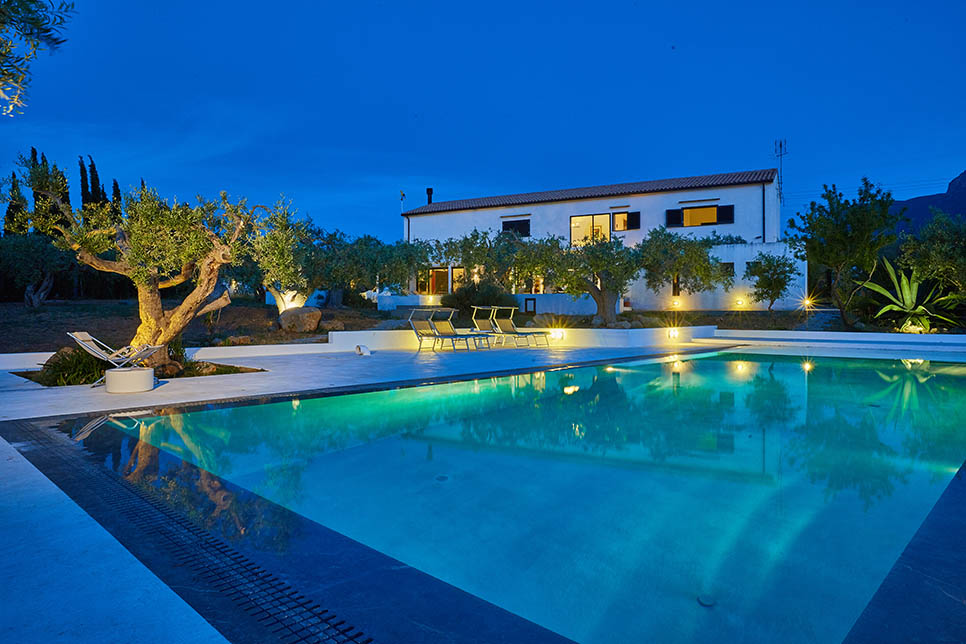
Palermo’s food culture
If street food’s your thing, you’re going to find yourself in foodie heaven. Ballarò, La Vucciria and Il Capo are the three main markets, each with their own character. Start at Ballarò, the oldest of the markets, for an introduction to traditional Sicilian fried treats such as sfincione (pizza, Sicilian style), panelle (chickpea fritters) and arancini. La Vucciria tends to be quieter during the day but packed into the early hours at night time. Il Capo is the one that most resembles a Middle Eastern souk, a maze of stalls piled high with fresh fish, meat and locally produced fruit and vegetables, and a great place to stock up on provisions for your villa.
If you’re looking for a less frenetic experience, head to Pasticceria Cappello, a historic pastry shop that dates back to 1940, where you’ll find the best cannoli and cassate, or to the Antica Focacceria San Francesco, a restaurant in one of the city’s most charming piazzas.
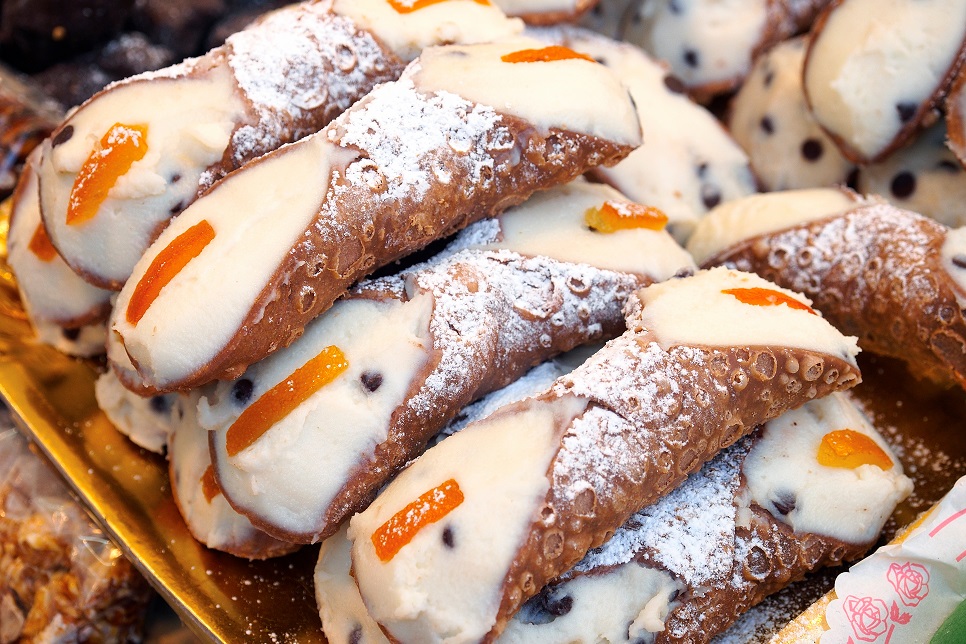
At the opera
Palermo’s magnificent opera house, the Teatro Massimo, is the third largest in Europe and well worth a visit. Even if you’re not a massive opera fan, consider taking a daytime tour for a glimpse of the ornate gold and red auditorium, the seven tiers of boxes and the ceiling painted by Rocco Lentini.
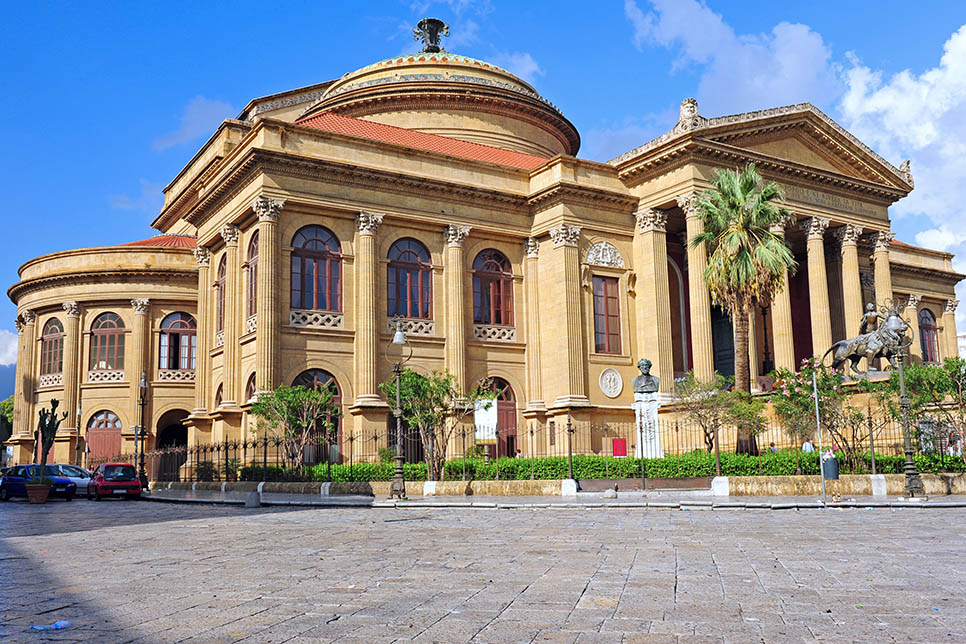
The traditional sights of Palermo
With more than 100 churches to its name and several magnificent palazzi, you’re unlikely to get round everything! One of the must-see sights is the Royal Palace, or the Palazzo dei Normanni, where the UNESCO World Heritage Cappella Palatina, adorned with gold, mosaics and marble, is the best example of the city’s unique Roman, Byzantine and Arabic style.
Another UNESCO site is the Chiesa della Martorana, also known as Santa Maria dell’Ammiraglio, which has some extraordinary mosaics. If you think the name ‘martorana’ sounds familiar, it’s said to date back to the nuns decorating the fruit trees with marzipan fruits to impress a visiting king. The marzipan tradition has lived on, as evident in the colourful shop windows of the city’s many pasticcerie.
One of our favourite spots is the Chiesa di Santa Caterina, set between Piazza Bellini and Piazza Pretoria. It would be easy to skip this one – the exterior is fairly plain – but pop in to marvel at the ornate marble interiors and pause to pick up a treat or two at the convent bakery where the nuns still make cannoli and cakes.
From here, it’s just a minute or two on foot to the Fontana Pretoria, an elaborate fountain adorned with heads of elephants, dogs, cats, rhinos and other beasts. In fact, the fountain was also known as the Fountain of Shame thanks to the cavorting naked figures which, understandably, didn’t go down well in 1574.
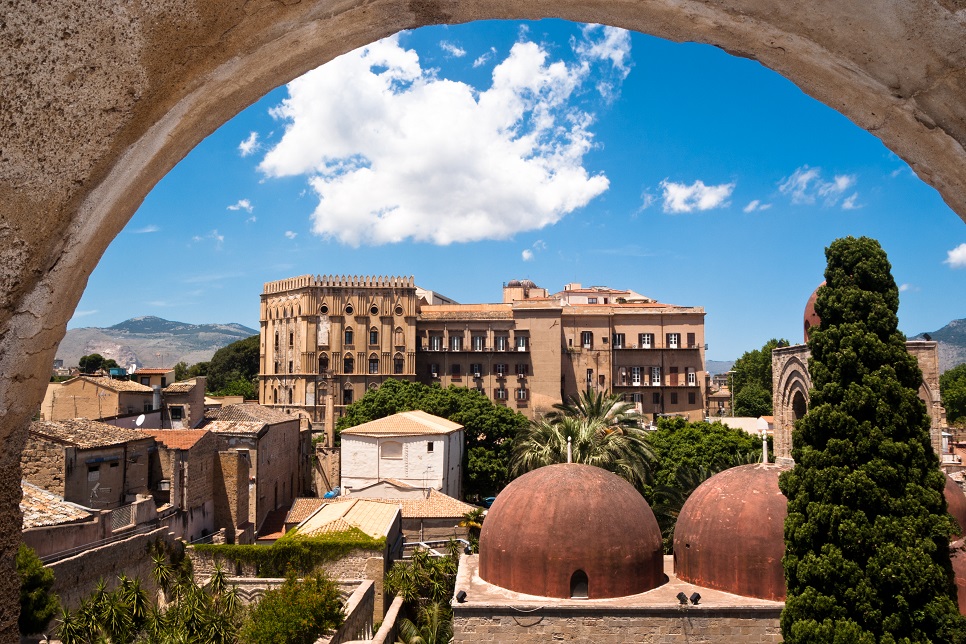
Best Palermo city views
Escape the hustle and bustle and get a bird’s eye view of the city from several locations. In fact, the highlight of the Cattedrale di Palermo is the rooftop views over the city. You’ll find more great views of the skyline from the Cupola of San Salvatore, from the Chiesa di Santa Caterina and on a Roof Terrace Tour of the Opera House.
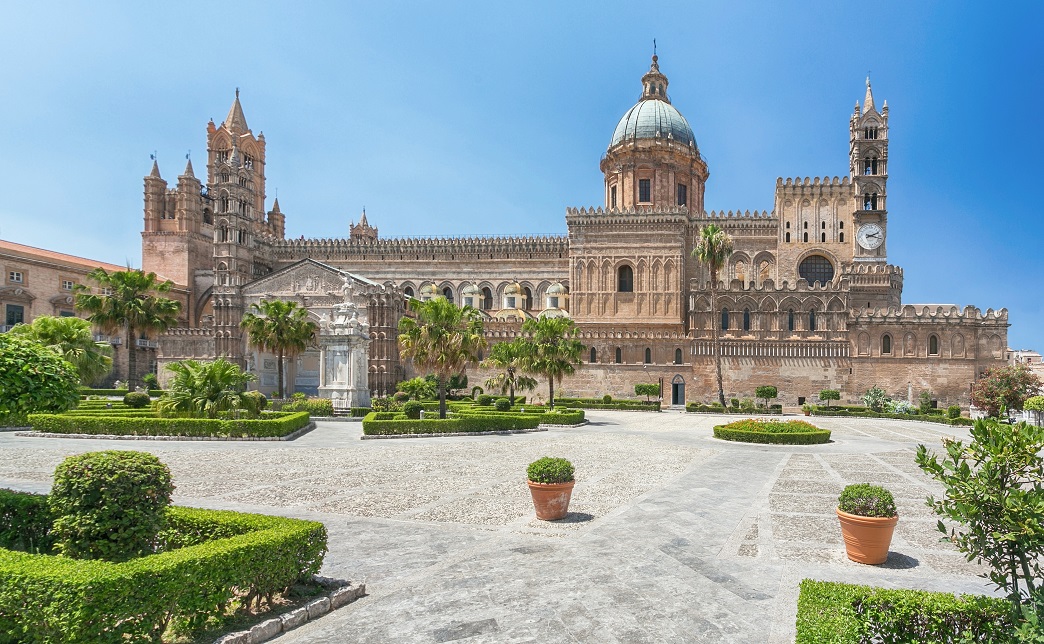
Get off the beaten track in Palermo
Prefer to explore beyond the main tourist hotspots? Head for the simple exterior of the Oratory of Santa Cita and visit the stunning chapel adorned with intricate white stucco sculptures of Cupid and angels.
Other beautiful churches include the baroque Chiesa del Gesù, built in 1590 and also known as the Casa Professa, and the Chiesa dell’Immacolata Concezione al Capo, built in 1604 and hidden away close to the Il Capo market near Porta Carini.
For something entirely different, visit the Museo Palazzo Branciforte where you’ll find archaeological works and a wooden theatre with Giacomo Cuticchio’s Sicilian Puppet collection.
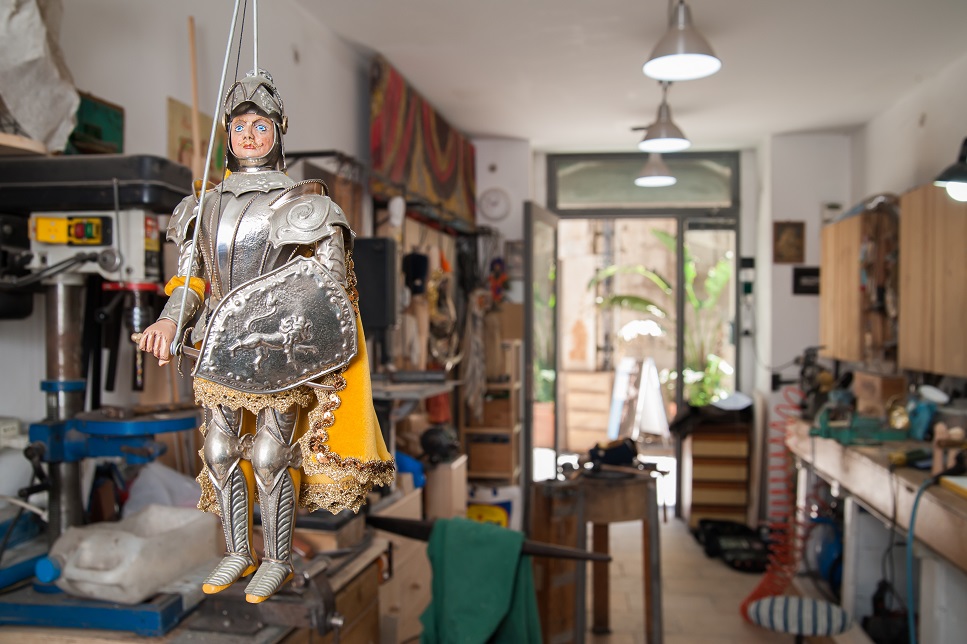
Palermo’s more unusual sights
One of Palermo’s more unusual attractions is the Capuchin Monastery Catacombs where 8000 mummified remains dating back to between the 17th and 19th century are on display in an underground cemetery right next to the Capuchin monastery. Most chilling sight? The embalmed body of a little girl, Rosalia Lombardo who died in 1920.
A guided tour of the Qanat, a series of sloping underground tunnels, provides a fascinating insight into the genius of the Arabs, although not for the claustrophobic. Situated primarily beneath the Corso Calatafimi, the system was used to transport water for drinking and irrigation in an area that once boasted royal gardens and palaces with elaborate fountains and exotic plants.
Tours and guided activities in Palermo
Not everyone enjoys exploring cities independently. If you want to find out what tours and guided activities we can arrange for you in Palermo, visit our activities and excursions page.

